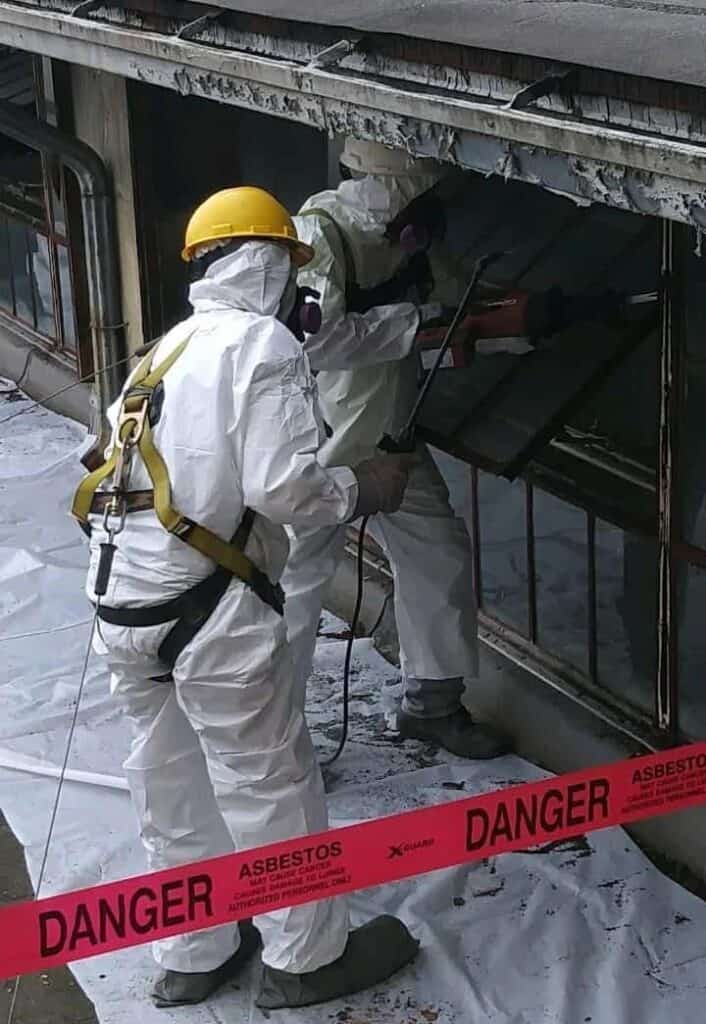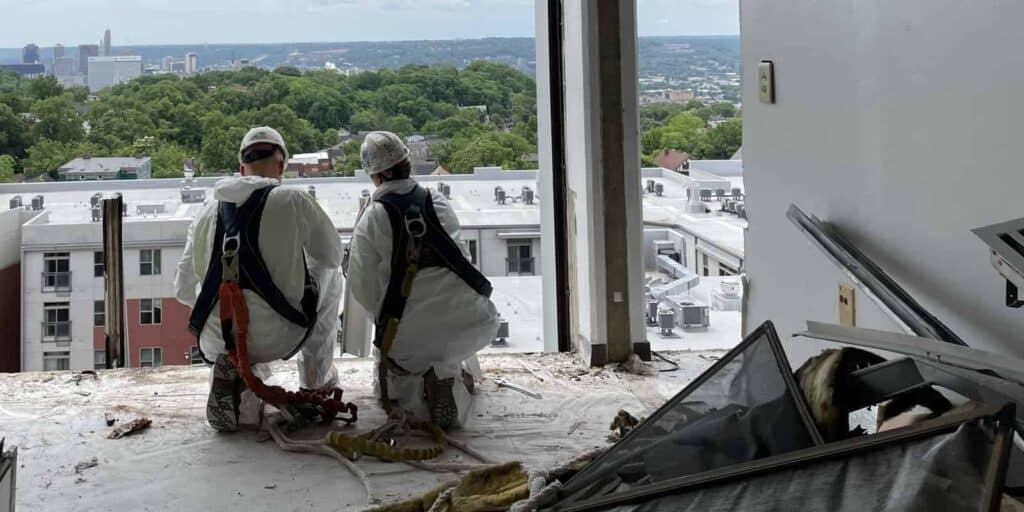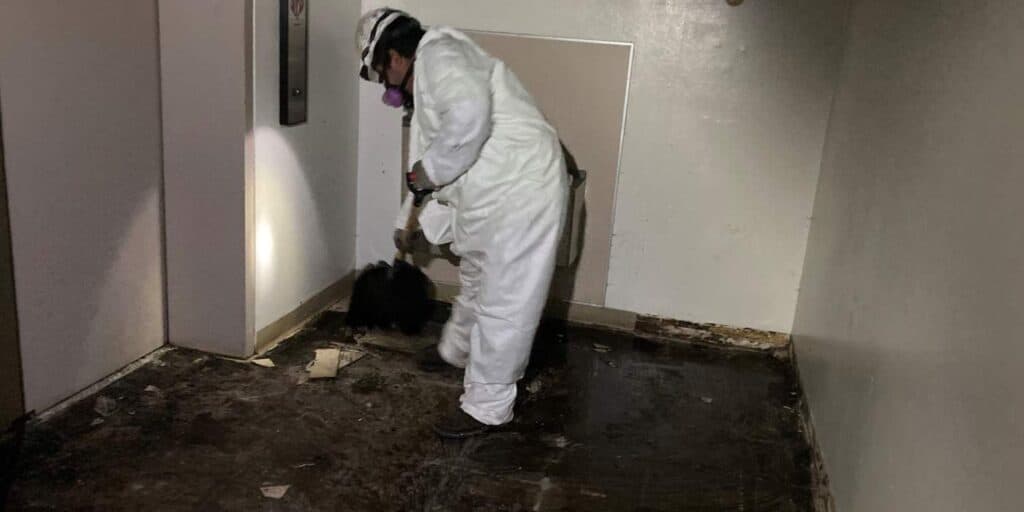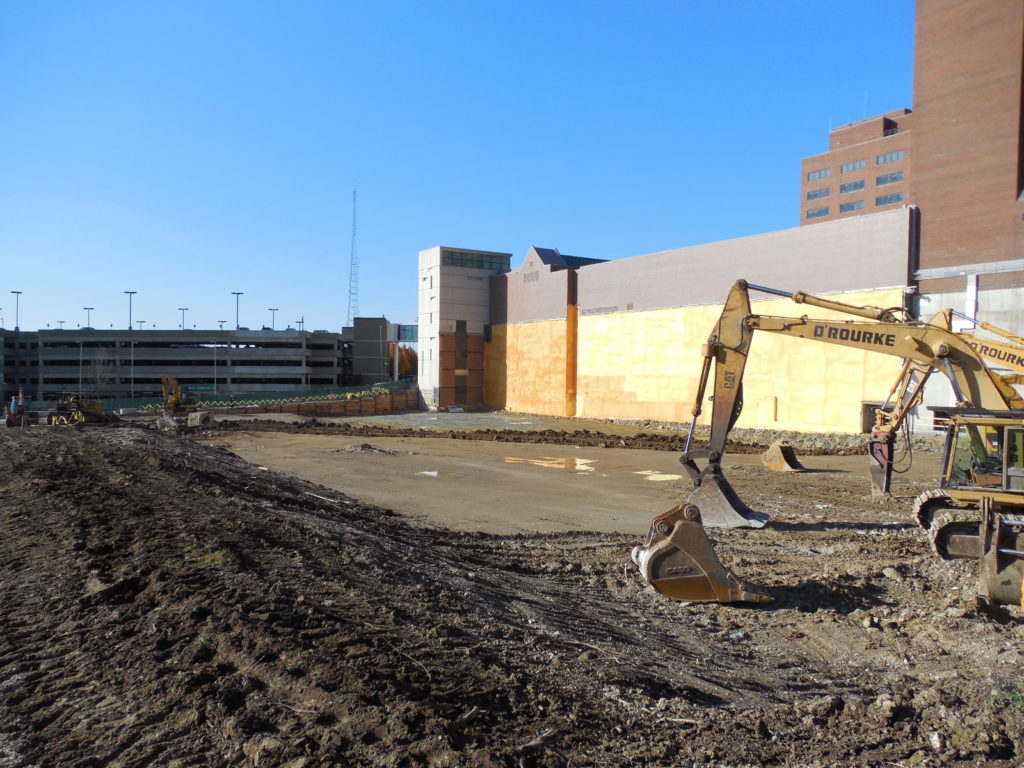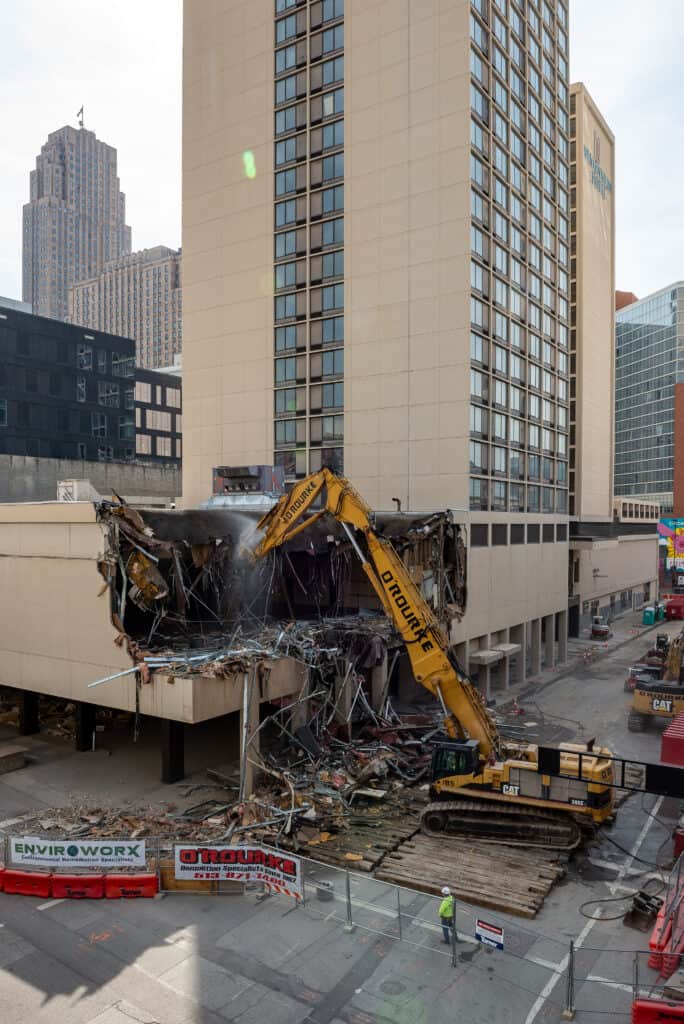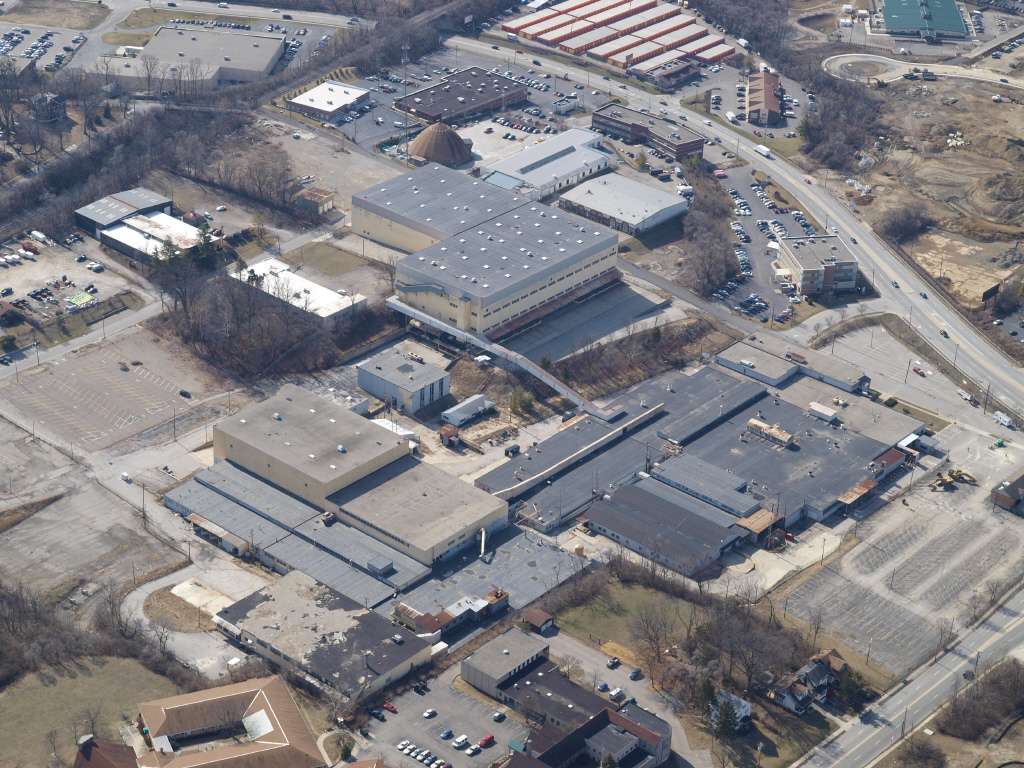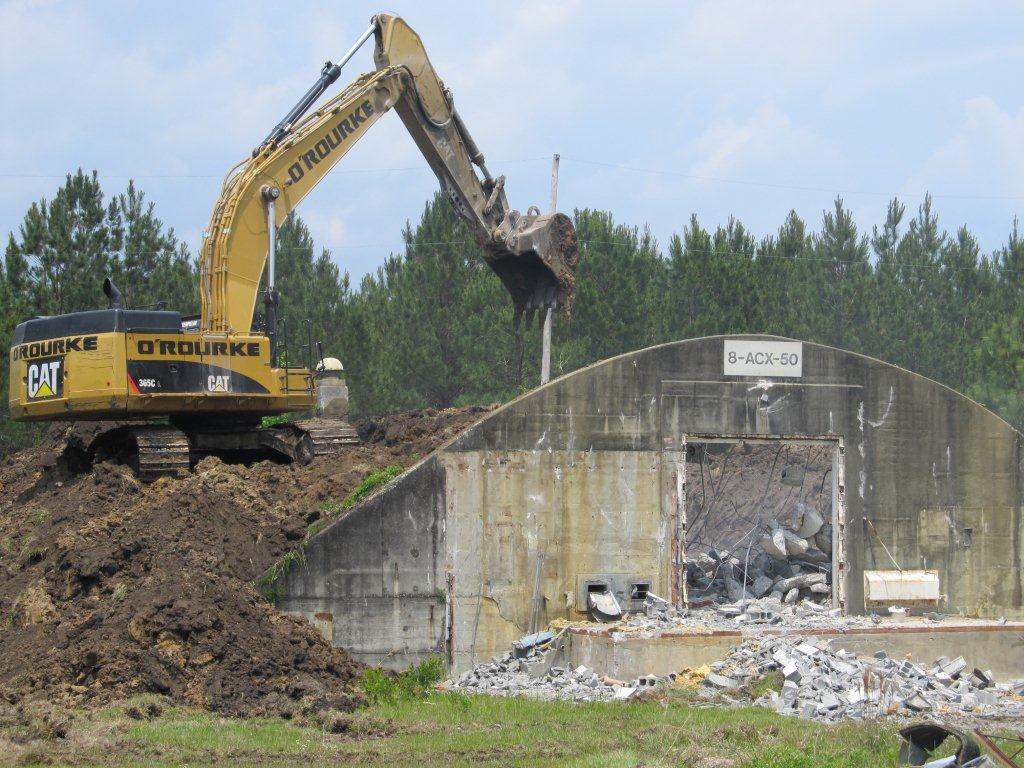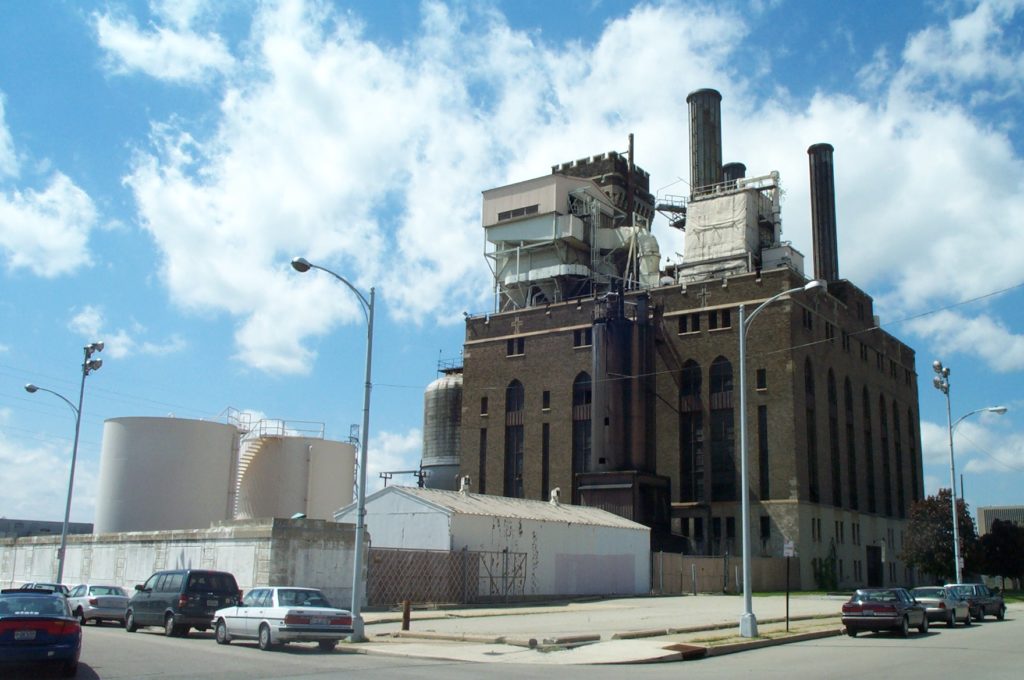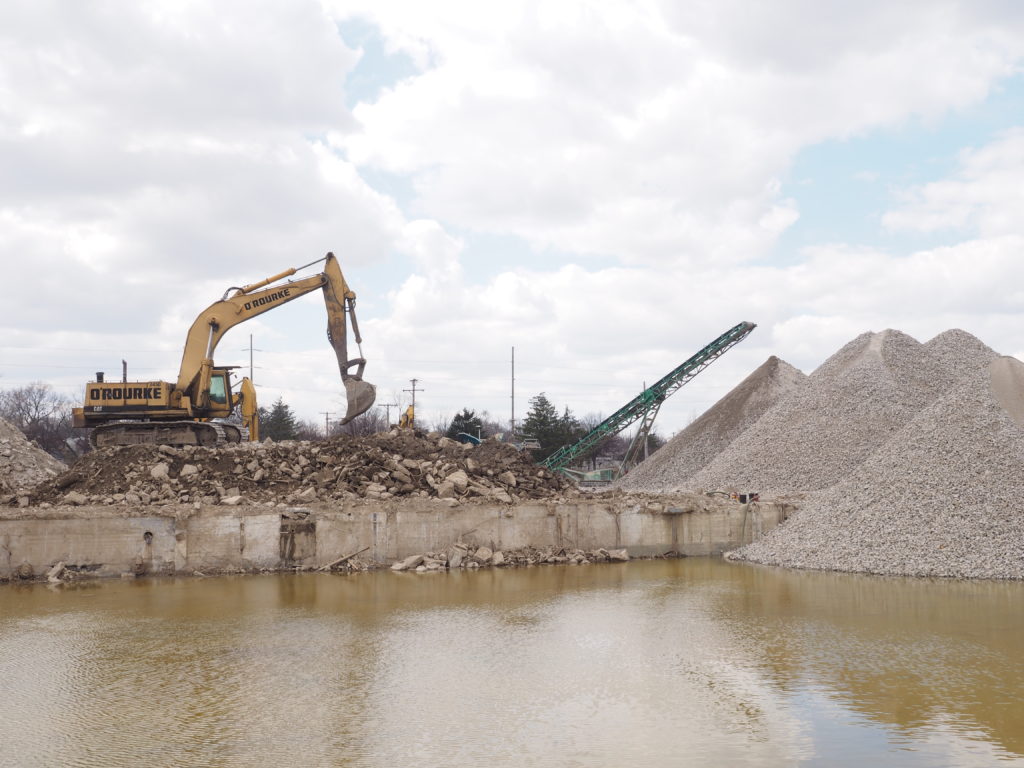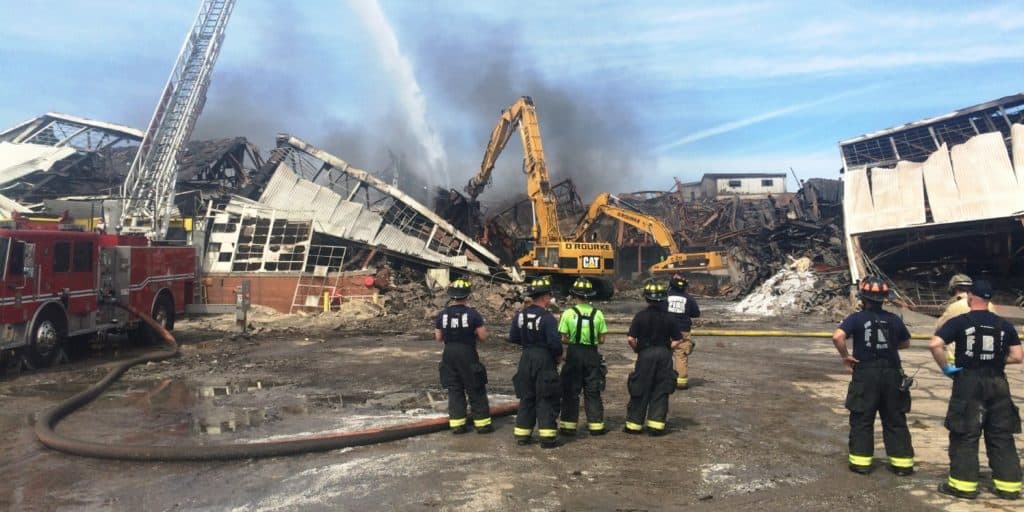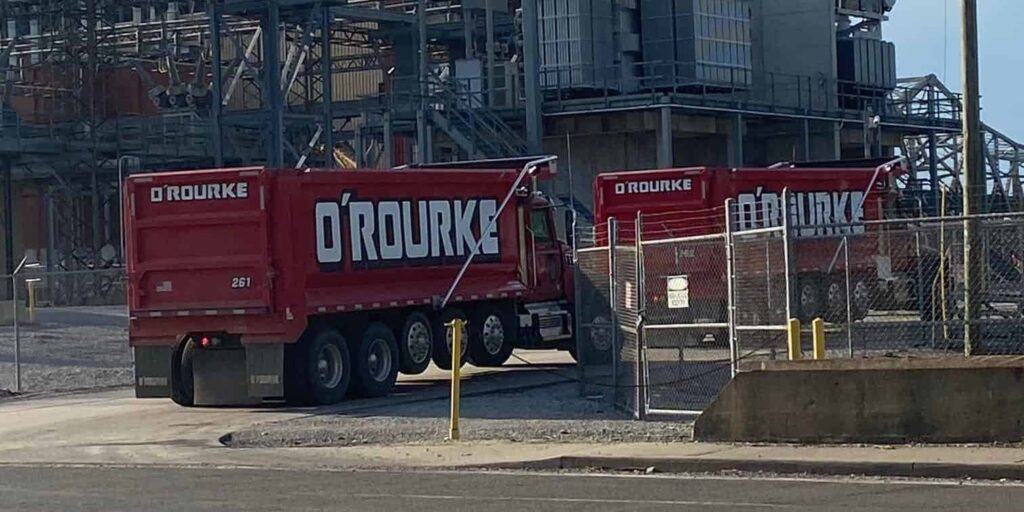Our Abatement and Remediation Services
When it comes to the abatement and remediation of hazardous materials on your property, O’ROURKE is proud to be a trusted name in the demolition and environmental remediation industry. We offer a full suite of removal and disposal options for hazardous materials. Contact our team today for a free estimate and more information regarding your project.
– Asbestos Abatement
O’ROURKE performs asbestos inspections and abatement through a multi-step process that ensures complete removal and client satisfaction. We use EPA-approved asbestos removal methods and equipment to properly contain, remove, and safely dispose of these materials on your property, eliminating the risk of asbestos exposure on the site.
– Lead Abatement
O’ROURKE is also experienced in the removal of lead paint and other lead-based toxic materials. Our certified professionals use specialized safety equipment and industry best practices to detect and remove lead-based paint from any interior or exterior surface.
– Mold Remediation
Mold abatement is critical for businesses and homeowners alike, as mold can cause significant health issues, such as lung cancer, if not treated promptly and safely! Our licensed specialists are well-versed in mold remediation, from the initial survey to complete removal and disposal, ensuring that your property stays mold-free for years to come.
– RCRA or Hazardous Waste Removal
O’ROURKE offers a range of services related to the safe management and disposal of hazardous waste materials. Our certified professionals are trained in RCRA regulations and guidelines, including the sampling, analysis, storage, collection, and disposal of these materials.
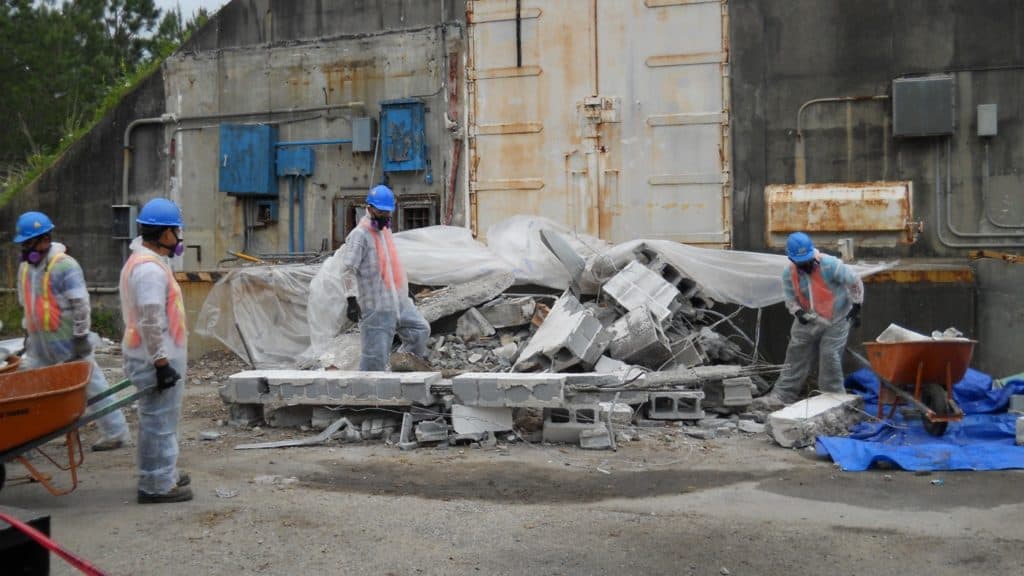
Environmental Remediation Services
Environmental remediation is a process used to eliminate hazardous materials from the environment and restore contaminated land to its original state. It is primarily used where toxic materials have been dumped, leaked, or otherwise released into the environment, either as ground waste or hazardous air pollutants.
Our environmental remediation service aims to reduce or eliminate any risks associated with these materials, such as air and water pollution, health problems, and ecological damage.
– Contaminated Soils
O’ROURKE has many years of experience in the safe remediation and disposal of contaminated soils, including those contaminated with petroleum products or other hazardous substances. Our team has the skills, training, and equipment to correctly identify, remove, and dispose of soil contamination within your property.
– AST/UST Removal & Cleaning
O’ROURKE offers comprehensive services related to the cleaning and removal of underground storage tanks (USTs) and above-ground storage tanks (ASTs). Our certified professionals understand the importance of proper containment and disposal and can work diligently to ensure that all regulations are met.
– Decontamination
Our decontamination services are an essential part of hazardous material abatement. It involves removing, neutralizing, or destroying hazardous materials from a given site or area. Contaminated sites may be decontaminated by physically removing contaminated items (i.e., soil, equipment, and sections of buildings).
– Waste Minimization Analysis
O’ROURKE provides waste minimization analysis services to identify ways to reduce waste, save money, and improve safety on the job site! By analyzing your waste stream and identifying possible areas for improvement, we can help identify cost-effective solutions that are good for the environment and your property.

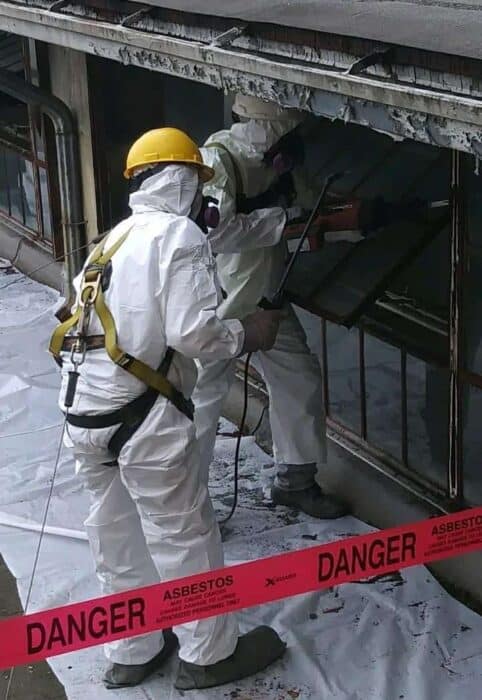 1. Asbestos
1. Asbestos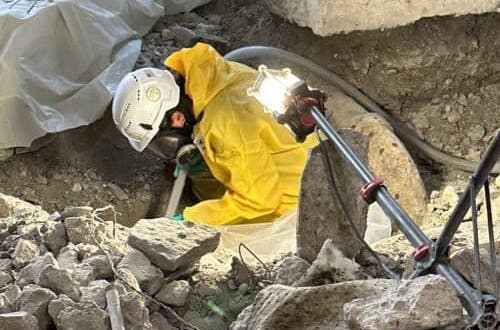 Universal waste (i.e., fluoresce fluorescent bulbs, neon, high-intensity discharge, mercury vapor, high-pressure sodium, and metal halide lamps)
Universal waste (i.e., fluoresce fluorescent bulbs, neon, high-intensity discharge, mercury vapor, high-pressure sodium, and metal halide lamps)